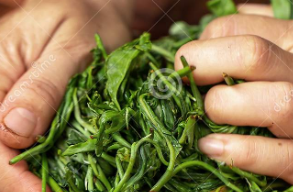Tea varieties and benefits are numerous. Whether it is for the taste, the sheer enjoyment of a good cup of tea, or the health benefits; Tea is a favorite drink used all over the world. Almost every tea comes from the whole leaves and, leaf buds of the Camellia sinensis plant, [or tea plant]; which is an evergreen shrub. Also, there are two varieties of this plant, and each makes different types of tea. With features that define each one. Go here to try an amazing quality of different teas, plus gift sets!!

The tea plant is harvested by hand; Because only the top young leaves are to be plucked. To truly understand tea and its varieties, you need to know actually, What Is Tea? Because there are three main categories of tea: True tea, Herbal tea, and Flavored tea; We recognize teas by the plants.
There are also subcategories within each of these categories, to further make the distinction between different types of tea. The story of tea begins as part of a mystical legend. In 2737 B.C.E, the Chinese emperor Shen Nong discovered tea by accident. According to ancient tales, stray tea leaves fell into the emperor’s boiling pot of water. And so began a centuries-long love affair with tea.
How Tea Arrived Here.
The way we drink tea today is because of Japan. Before that, we drank tea by taking fresh leaves and soaking them in water. Then along comes the Ming Dynasty, and the process we know today was created. Which includes harvesting, drying,[except now we have the clothes drier to help] rolling, and heating. Tea made its way from Britain to the United States when it was a colony. Today, the tea industry has increased the available flavors and varieties. Tea no longer comes only from the leaves of one plant. There are infusions from spices and herbs, flowers, and fruits—all because one day, thousands of years ago, a tea leaf fell into a pot of water.
Herbal Tisanes Secrets.
Herbal teas do not contain any leaves from the tea plant. They come from infusing spices, herbs, flowers, fruits, and twigs in hot water. There are thousands of flavors when it comes to herbal teas due to the wide variety of plants used to make infusions. The health benefits of true teas have been researched by scientists for decades; herbal teas have only recently become an interest of mainstream medical practitioners. Herbal tea’s usage as medicine in a holistic method of healing the mind, body, and soul is at least 3,000 years old.
Processing The Varieties Of Tea.
There are five true teas: Green, White, Oolong, Black, and Pu-erh teas; Furthermore, these teas were discovered thousands of years ago. And the ones used by scientists for research on health benefits. Studies have found that some teas may help with cancer, heart disease, and diabetes; with weight management; lower cholesterol, and help with mental alertness. Tea also appears to have antimicrobial qualities:
Although these five teas come from the same plant, The shape and chemistry of the tea leave changes; Teas of Different styles are made. This is a five-step process furthermore, not all teas use these steps. While with other teas the process has to be repeated several times. New tea drinkers are surprised; to discover that herbal and flavored teas are not real tea. They are made by infusing spices, herbs, fruits, and flowers in water, to make what is called by real tea makers Tisanes.
[ 1 ] Plucking the leaves:
[ 2 ] Withering; Allowing the tea leaves to wilt and soften:
[ 3 ] Rolling; Shaping the leaves and squeezing out the juices:
] 4 ] Oxidation; rolling causes the cell walls of the leaf to break down, the enzymes in the tea leaf interact with oxygen, and oxidation occurs:
[ 5 ] Firing; Drying
The Five Basic Styles Of Teas.
White Tea: This is unprocessed tea. White tea is plucked and allowed to wither and dry; due to this, In poor weather, the leaves are placed in a tumble dryer on a gentle, low heat cycle for drying: White tea leaves are not rolled or shaped and, minimal natural oxidation occurs. Because of this, white teas make very pale green or yellow liquid and are the most delicate in flavor and aroma.

Oolong Tea: Takes the five basic steps to create. Rolling and oxidizing are done repeatedly. It is one of the most time-consuming teas to make. The leaves are gently rolled and then allowed to rest and oxidize for a while. Checking often the amount of red or brown on the leaf during the making process. Then rolled again, then oxidized. Over the course of many hours, sometimes days, The tea created is an incredible layering of aroma and flavor. Oolongs usually have a more complex flavor than Green or White teas, with very smooth, soft, and rich in floral or fruity flavors. Because of their smooth yet rich flavor, Oolongs are ideal for anyone new to tea drinking.
Black Tea also takes all five basic steps to create but, is allowed to oxidize completely. Also, the steps are followed only once. The tea is completed in a day. The liquid of Black tea ranges between dark brown and deep red and offers the strongest flavors. and, in some cases, the greatest acidity. Also used most often for iced tea. Black teas, particularly those from India and Sri Lanka, are often drunk with milk and sugar.

Green Tea: plucked, withered, and rolled; but not oxidized; while rolling the tea leaves; heat is applied to prevent oxidation; This is done by steaming or tossing in a hot dry wok. Because of this, the high heat stops the enzymes from turning the leaves brown. During this process, the leaves create many different shapes; each different in taste. The liquid of green tea is usually a green or yellow color, furthermore, with flavors depending on the preparation; pan-fried, teas- ranging from grassy to toasty; and fresh steamed green teas-mild, vegetable-like.
Pu Erh Tea: This is processed like green tea, but before the leaf is dried, it’s aged either as loose-leaf tea or pressed into dense cakes and decorative shapes. a completely different art. Pu-erh tea is fermented [No not the type that makes alcohol] Depending on the type of Pu-erh tea being made, either dark “Ripe” or green ‘Raw” to age, the process will take between months to years. The older Pu-erh teas are considered ‘living teas.” Just like wine! Pu-erh teas are valued for their earthy, woodsy, or musty aroma and rich smooth taste.
Some Of The Health Benefits Of Tea.
Growing up Green tea was all there was. Drank hot morning and night and, cold during the day. With or without milk and sugar. And with honey, if you were sick. It was refreshing, soothing, and always enjoyable. Now multiple research studies are proclaiming the benefits of tea. Some are so far out there, that it causes concern. Below are some health benefits with solid research that I found. Around the world, researchers are studying the effect of different types of teas on different illnesses, and I am sure we will continue to hear more as theories are proven.
AGING: Green Tea With Less Disability Among Elderly
ARTHRITIS: Green Tea Can Help Reduce Inflammation And Arthritis Pain; Loaded with antioxidants, green tea helps boost metabolism and lower the risk for certain diseases
BONE STRENGTH: Tea Helps Promote Weight Loss And Improve Bone Health
BREATH: Tea’s Dental Benefits
drinking at least three cups of tea a day can help keep your teeth in good condition, reducing the risk of decay
CHOLESTEROL: Green Tea Lowers ‘Bad’ Cholesterol In Study
ENDURANCE: Tea Can Boost Exercise Endurance
WEIGHT LOSS: Green Tea Helps Melt Off Pounds
This has been an interesting journey, to discover more about tea my favorite drink hot or cold. And to share it with you. I will continue to explore and learn about the individual teas and write about them. So check back often and keep informed.
We are available to Contact with Regard to This site See How by CLICKING HERE

